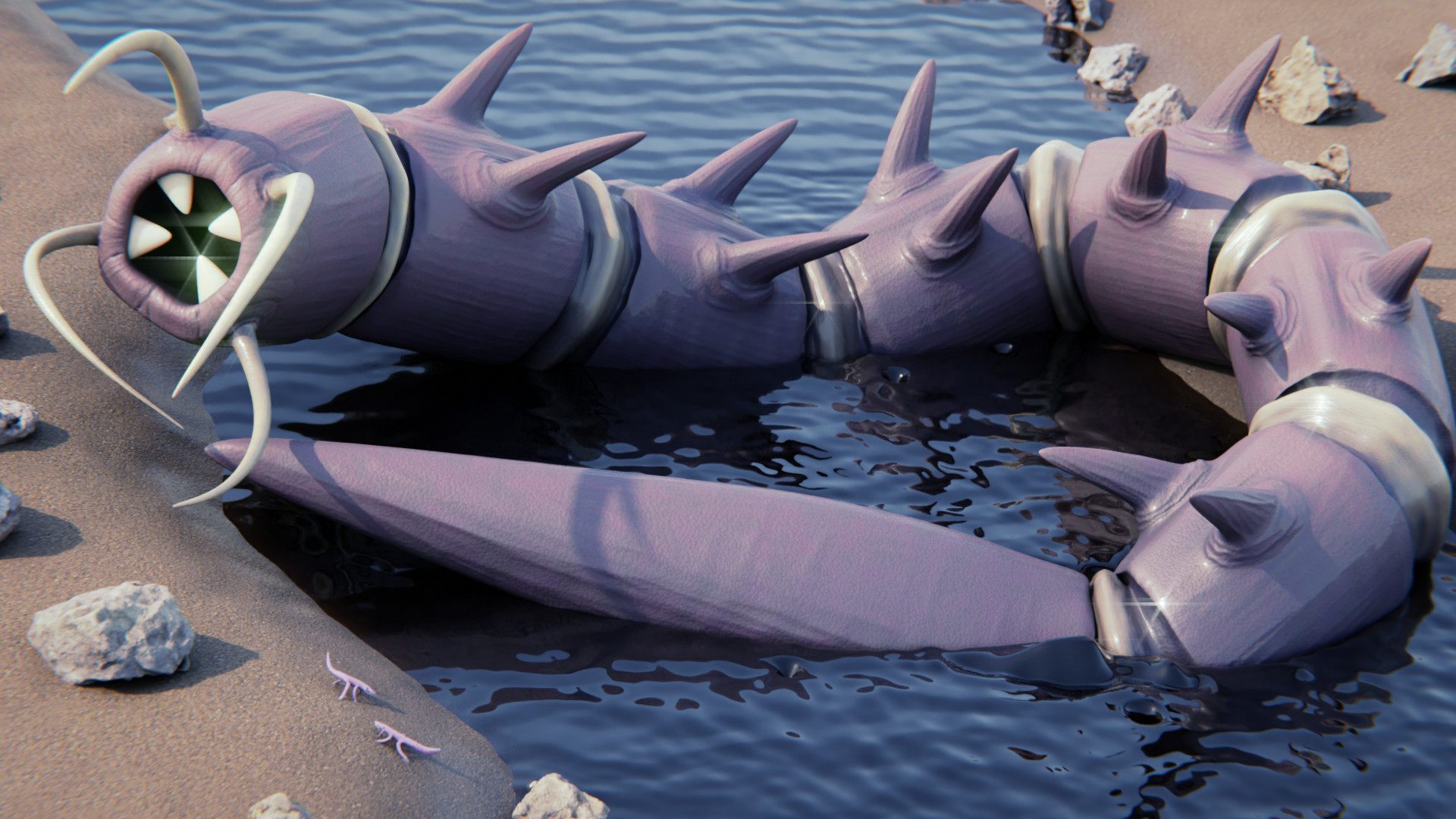Spikeworm
With the extinction of many of the large oceanic carnivores, some of the carnivores from deeper waters rose up to fill the niche. Sleeping Fish were one such species though their lack of eyes soon became a hindrance as more visual hunters began to out compete them. They were forced into murky freshwater habitats, where the lack of sight was less consequential. These descendants of the sleeping fish would be called the Spikeworms.
They get their name from their resemblance to the worms of earth but the similarities end there. Spikeworms are voracious ambush predators that use specialized chemoreceptor tentacles to find prey. Once detected the tentacles will latch onto the target while the body coils around its victim, immobilizing the prey while its jaws begin to bore into the victim's body.
Pictured here a spikeworm has fled upstream from it's normal habitat after losing a battle over territory with a conspecific. [Creature design by Saurusblood]
Basic Information
Anatomy
Spikeworms have a long cylindrical body that is divided into fifteen segments. The first segment is the head and possesses a large circular jaw with four armored teeth used to masticate prey. The head also has four chemoreceptor tentacles that are also quite sensitive to touch, positioned radially around the head.
The following 13 segments alternate between soft skin covered segments and chitin armored segments. The six armored segments have two dorsal rear facing spikes. These spikes are hollow and protect their gills from parasites in addition to being used as a form of self defense from other predators. The seven soft skin segments are very flexible and strongly muscled to allow optimal mobility in the often maze like freshwater ecosystems. This skin is also semi-permeable and allows for respiration on land, so long as it is moist. This is very inefficient though and only allows the worm to be on land for an hour at most.
The final segment is a conical tail that contains a ventral cloaca. This segment is also armored and contains the Spineworm’s reproductive organs.
Genetics and Reproduction
Like their ancestors spikeworms during mating, females will release strong scents from their cloaca, attracting males. When a partner is found it will release the eggs in a large egg sac. After the male fertilizes the eggs the pair will bury them in soft sediment.
Growth Rate & Stages
Juveniles emerge from eggs as miniature versions of the adults and will feed on small prey items as well as each other until they become 4 meters long and become fully adult. This process takes 3 local years.
Ecology and Habitats
Spikeworms are native to the freshwater habitats of Yama primarily within lakes and river systems.
Dietary Needs and Habits
Spikeworms are ambush predators and will hunt a variety of prey including prey targets that are larger than themselves. When migratory animals swim up rivers they will congregate to predate on them.
Additional Information
Perception and Sensory Capabilities
Spikeworms like their sleeping fish ancestors are completely blind and rely on their highly sensitive tentacles to find prey and direct themselves in murky water.
Genetic Ancestor(s)
Scientific Name
Akídaskoulíki foverós
Origin/Ancestry
Xenosegmenta
Lifespan
8 local years
Average Length
5 m
Geographic Distribution
Remove these ads. Join the Worldbuilders Guild











Comments